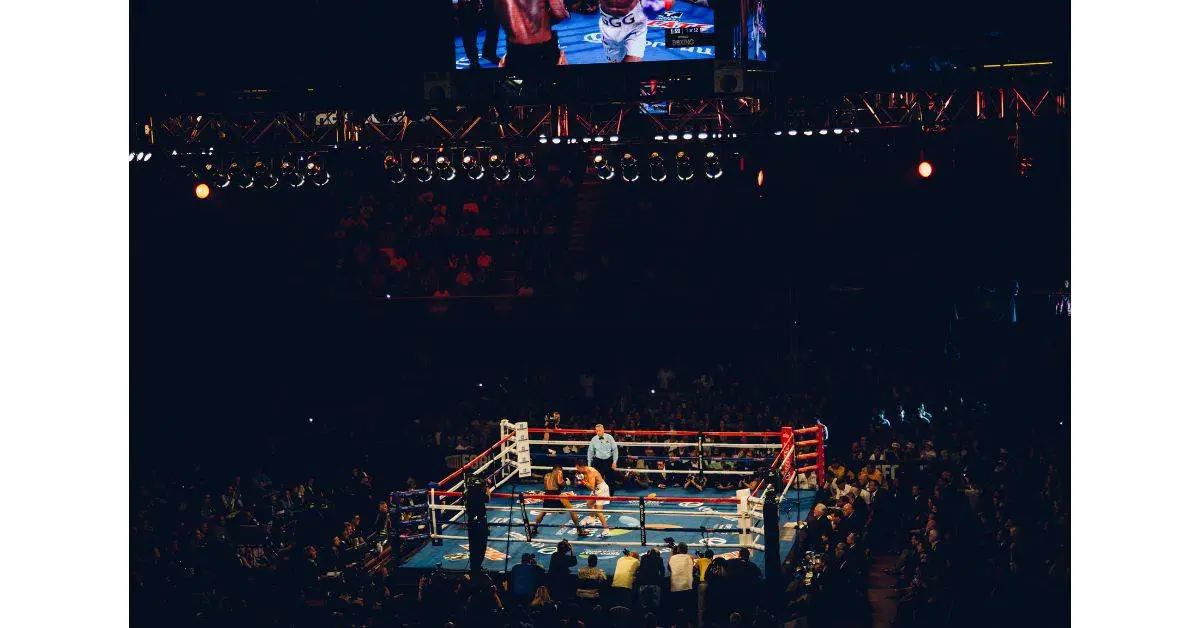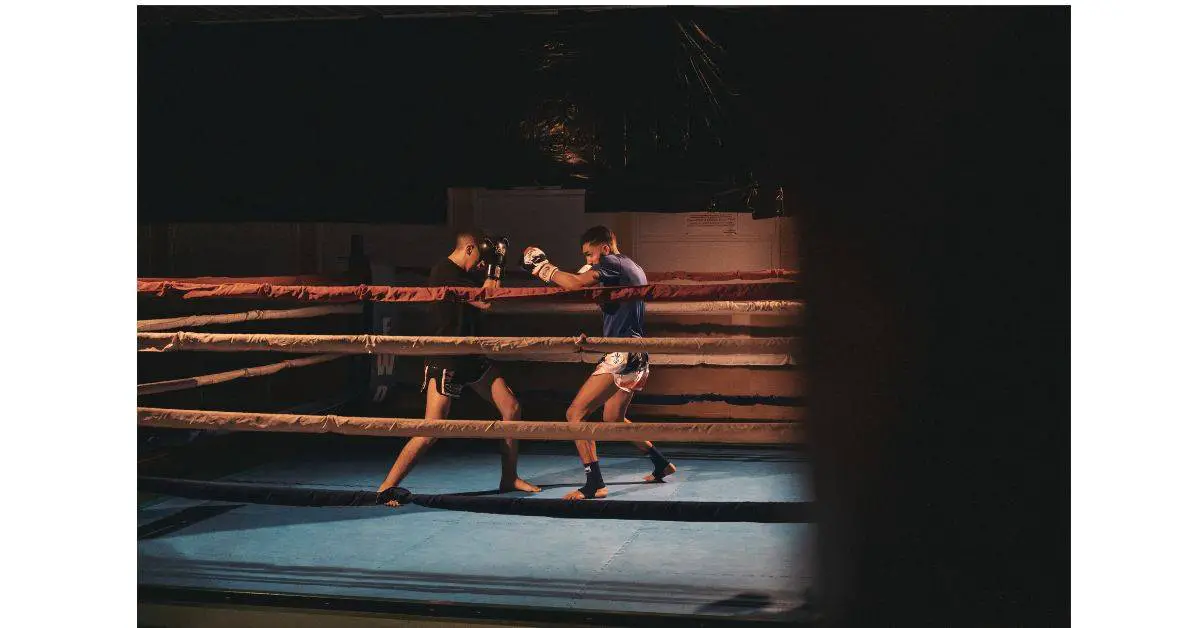Boxing is one of the most popular sports in the world. Great boxers are not born overnight, so a student needs to establish goals and work on improving technique and fitness.
An excellent boxer has speed, power, defense skills, endurance, intelligence, discipline, and accuracy. However, knowledge is power, and to be a good boxer, one must understand the discipline.
It has a lot of historical and technical information that one needs to be conversant with to be a better boxer.
If you want to train boxing at home, hold up! At some point, you’d have to buy the essential gear to ensure you learn the art of punching the right way. So, I encourage you to buy these two items: This punching bag and these punching gloves. They’ll both make your journey much easier.
#25. Jack Broughton came up with the first set of boxing rules
Jack Broughton is one of the most acclaimed bare-knuckle fighters in former times. He was a student of the popular champion of England, James Figg, who was a prizefighter in the 1700s.
Jack wanted people to accept boxing as an athletic venture. In 1743, he came up with the first set of rules known as the Broughton rules. In 1838, the boxing community adopted the London Prize Ring Rules, a modification of the Broughton Rules.
He pioneered the rules after a boxer died from injuries he sustained in a fight.
#24. The original name of boxing is pugilism
The name pugilism emanates from the Latin word “pugnus”, meaning “fists.”
Pugilism refers to the practice of fighting with fists. People started referring to it as “boxing” in 1719. The name originates from the Greek pyx meaning “with clenched fists.” Pugilism includes all the other forms of fist fighting.
In the 17th century in England, people referred to boxing as prizefighting to emphasize pursuing the sport for monetary gain.
#23. Bare Knuckle Fists Were Common In Ancient Times
In 1698, pugilistic contests started happening at the Royal Theatre of London.
It involved matches without gloves and rules, thus bare-knuckle boxing. The fighters fought for purses and stakes placed. During this time, the fighters’ fans gambled on the matches’ outcomes. Lighter men would go against larger opponents, as there were no weight classes.

There was a presence of rounds, but the contestants fought until one opponent could not fight anymore. The contests allowed wrestling, and fighters often fell on their rivals after throwing them to the ground.
#22. Jack Broughton introduced modern gloves
The idea behind modern gloves was to make boxing safer.
Broughton introduced modern gloves known as mufflers to protect the boxer’s hand and reduce the impact on the opponent’s face. However, the gloves were more lethal than bare fists. Without gloves, the fighter aims for softer targets to ensure they do not injure their hands, but with gloves, they aim at the head.
This matter led to increased brain damage cases in fighters. In modern boxing, many boxers have had extensive brain damage, and the main cause of this anomaly traces back to using padded gloves in the sport.
#21. Joseph Louis Barrow, made the most heavyweight title defenses
Barrow was an American professional boxer who fought from 1934-1951.
He reigned as the World heavyweight champion from 1931 until his retirement in 1949. Barrow won 25 title defenses consecutively. He made a record not seen before by reigning as champion for the longest time in history. Barrow made a cultural impact, as he was the first African American to be a nationwide hero in the USA.
He pioneered breaking the color barrier in American sports by attending a PGA event in 1952 under a sponsor’s exemption. He is an icon, remembered for being one of the greatest heavyweight boxers of all time.
#20. Boxing has the highest revenues in the sports industry
It is one of the biggest money-making sports currently.
Pay-per-view and boxing match tickets are more expensive compared to basketball tickets. A ticket to a high-profile boxing fight costs approximately $400, while in other sports, such as the popular basketball, the tickets are roughly $200.
Even accessing live broadcasts to watch boxing fights online is very costly. Boxing is also one of the big sports bettors in modern sports. Casinos and betting sites provide services to bet on boxing and even accept money in US dollars.
#19. The most valuable fight in history
The two boxers, Floyd and Manny, were arranging to fight one another for more than five years
The fight between Floyd Mayweather and Manny Pacquiao was the most expensive in history. It occurred in Paradise, Nevada, in May 2015. It was a long-awaited fight not only by the boxers themselves but even by boxing fanatics.

Mayweather had 223.5 million Euros while Pacquiao had 122 million Euros, the entrance fee at the gate was 58 million Euros, and the pay-per-view was 333 million Euros, totaling 678 million Euros. This breakdown shows how this fight gained the most expensive fight title.
#18 Ancient Greek has the earliest rules for boxing
The contests in ancient Greek took place outdoors, adding the challenge of bright sunlight and intense heat to the fight.
Boxing matches in ancient Greek had no rounds; the boxers fought until one opponent could not go on anymore or accepted defeat by holding up a finger. The fighters came from all social classes, and many boxers came from wealthy backgrounds.
One rule was that the boxers could not hold an opponent with one or both arms at close quarters.
#17. The invention of the mouth guard
By 1927, mouthguards were popular among boxers with the help of dentists who pioneered their creation.
Wolf Krause, a London dentist, developed the first mouthguard in 1890. The guard was made of a material known as gutta-percha. Its design protected them from getting lip lacerations during fights.In 1947, Los Angeles dentist, Rodney O. Lily Quist, made mouthguards from acrylic resin.
They fitted the lower and upper teeth perfectly, making them comfortable and unnoticeable.
#16. John Chambers drafted the Marquess of Queensberry Rules
Chambers sought the patronage of the Marquees of Queensberry, James Sholto, who allowed him to use the name
John drafted these rules in 1867 for amateur championships for heavyweights, middleweights, and lightweights. They consist of 12 rules and emphasize that fights were fair stand-up boxing matches in a 24-square-foot ring.
The rounds took three minutes, with one-minute rests in between. The fighter got a ten-second count when knocked down. The rules prohibited wrestling.
#15. In 1927 the National Boxing association was established
The work of the Association was to manage the popularity and ethics of boxing as well as arrange championships for the best boxers
Representatives from 13 American states formed the NBA to act as a fair governing body that managed the success of the popular sport. In 1962, following the popularity of boxing, the NBA gained members from other nations and changed its name to the World Boxing Association.
The WBA sanctions professional boxing bouts.
#14. The youngest world champion in boxing history
Young people excel greatly in sports in the past and currently.
Wilfred “El Radar” Benitez, a Puerto Rican lightweight through New York, is the youngest boxing world champion. Benitez claimed the WBA super lightweight title by beating Antonio Cervantes in 1976. He won with a 15-round split decision and made headlines at the young age of 17 years.
At 21 years, he claimed three world titles in three various divisions and had 37 wins under his belt.
#13. The winner of the Olympic boxing of Ancient Greece.
The ancient Greeks introduced boxing to the Olympics in 688 BC, and boxers participated in the 23rd Olympiad tournaments.
Onomastus was the first Olympic winner in the 23rd Olympiad, held in 688BC. He lived up to his name, “Onoma ”, which meant famous. Onomastus also wrote the rules of ancient Greek boxing.
#12. An official boxing match between a man and a bear happened in 1949
A history of men fighting bears has gone on for centuries.
In 1949, Gus Waldorf fought a bear inside a cage. He lost to the bear, but gained popularity for a lifetime. The shots taken during that match became the most famous photos in the bear boxing era.
Men continued fighting animals such as the kangaroo and octopus for fame.
#11. George Foreman earned more from his grills than from his boxing career
George is an American professional boxer who won the heavyweight championship two times and gold in the Olympics.
Salton Inc. endorsed George as the spokesperson of their fat-reducing grills and paid him $138 for using his name. He received 40% of the earnings from every grill sold. George earned $4.5 million a month from the grill’s payouts.
He confirmed that the money he got from the endorsement was much higher than the total earnings he got from his career as a boxer.
#10. Boxers must wear a mouthpiece during a match
Before the invention of mouthguards, boxers fought without them in ancient times and had multiple lip lacerations.
Professional boxers are required to wear a mouthpiece during the fight. The match cannot begin without both boxers having a mouthpiece. If the boxer displaces the mouthpiece during the fight, the referee will stop the round briefly for a ring official to replace it without interfering with the match.

If the referee feels the boxer purposely spits out the mouthpiece, he will deduct points.
/h
There are instances where a boxer knocks his opponent out of the ring.
The referee counts 20 seconds for the boxer to return to the ring. After the fighter returns to the ring, the referee must count 18 seconds before the fighter can start fighting again; this is known as a protection count.
The boxer cannot receive any help from the spectators or staff, as it will lead them to lose points or disqualification by the referee.
#8. The standard system for scoring a bout is the 10 point must system
This system has been the commonly used scoring system since the mid-twentieth century.
It involves judges using a 10-point scale to score each round independently. The judges score each round individually, awarding at least one fighter ten points each before deducting points for fouls.
Most boxers score 10-9 in rounds, with the winning boxer scoring a ten and the other fighter scoring a nine.
#7. There is a mandatory eight count after knockdowns
The compulsory eight counts is a standard procedure in all bouts.
This rule comes into play after the opponent knocks down a fighter, requiring the referee to count eight seconds before the fight is set to resume. It is part of the unified boxing rules adopted by the Association of boxing commissions.
If the fighter gets up before the count reaches eight seconds, the referee should continue counting to eight and then check if the fighter can continue fighting.
#6. The bell cannot save a knocked-down boxer in any round
A ring official rings the bell after the end of every round.
When the three minutes of a round have passed, and the referee is still counting seconds for the knocked-down boxer, the ring official shall not ring the bell until the boxer rises and the referee announces that the match will continue.
The bell cannot save the knocked-down boxer; therefore, they need to be fast on their feet, recover from the blow and continue fighting.
#5. The case of double knockdowns
Simultaneous knockdowns often happen in fights whereby both boxers knock each other down simultaneously.
In this case, the referee shall begin a count as any knockdown. If both fighters rise before the end of the count, their fight may continue. The judges determine the winner through their scorecards when both fighters rise but cannot continue.
If one fighter does not rise before the end of the count, then the judges declare his opponent the winner.
#4. The outcome of intentional Injuries sustained by fouls
Judges classify Injuries as either intentional or accidental and have particular consequences.
If an intentional foul causes an injury to a fighter and the bout continues, the judges shall deduct two points from the boxer who caused it. Still, if the bout does not continue, the boxer causing the injury receives disqualification.
If the bout continues but stops at later rounds due to the injury, the injured boxer will win through a technical decision. If a boxer injures himself while trying to foul his opponent, the referee will not make decisions in his favor.
#3. The outcome of accidental injuries caused by fouls.
Accidental injuries are very common in any form of sports.
If an accidental foul causes an injury and the referee stops the bout before four completed rounds, it will result in no decision. Assuming the referee stops the bout after four rounds, the bout will result in a technical decision.
If a round has no action, both fighters will have an even score.
#2. There are two forms of boxing
There are two types of boxing: amateur and professional boxing.
In 1908, amateur boxing became an Olympic sport. It consists of three to four rounds of three minutes. On the other hand, professional boxing has longer bouts ranging from 10 to 12 rounds. Scores in amateur boxing accumulate from the number of clean blows struck. Professional boxing prohibits punches below the belt.
Fighters in amateur boxing wear protective gear, while those in professional boxing do not.
#1. Boxing is one of the oldest and most popular sports
Boxing made its first debut as an Olympic sport in the 23rd Olympiad, held in 688 BCE.
The earliest evidence of boxing is in Sumerian relief carvings from the third millennium. The presence of a relief sculpture from Egyptian Thebes showing both fighters and spectators is another piece of evidence. It has gained popularity since ancient times to date.
The evidence claims that boxing is approximately 4000 years old.
Final words
As the saying goes, “History is the interpretation of the significance that the past has for us.”
These 25 boxing facts equip a student with knowledge of the history of boxing and practical information. Knowing the rules and organizations will automatically make you an excellent boxer. Identifying famous boxers and their styles is instrumental to a student coming up with their boxing style.
Take time to learn some boxing facts and see how it is instrumental towards mastery of the sport.
If you enjoyed reading this article, you’ll also enjoy reading about the best celebrity boxers you should know about.

